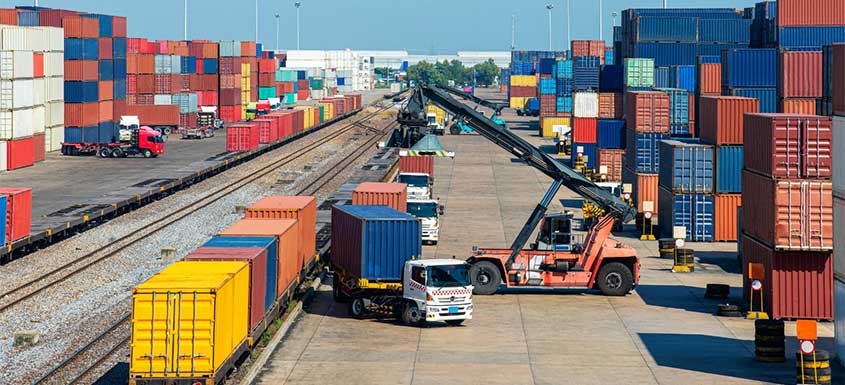Ask any business sector what the basic principles of supply chain management are – and the answer invariably comes down to affordable and reliable transportation services. Unfortunately for Canada’s forest products sector, the present system is neither affordable nor reliable.
Whether you are a forest company in Prince George BC, Peace River Alberta, Meadow Lake Saskatchewan, Thunder Bay Ontario, or Saint-Félicien Quebec – odds are, you have experienced a fragile and unreliable system that is under-performing. In a recent survey of FPAC member companies, 88% of respondents agreed that rail service and fulfillment issues are “having a negative impact on customer confidence and global competitiveness of [Canada’s] forest sector.” This problem predates the global disruptions caused by the COVID-19 pandemic – as far back as 2018 and beyond, industry insiders were flagging the damage done to Canada’s ability to attract investment by persistent transportation supply chain issues.
Canada’s forest products sector directly employs as many as 200,000 workers across 600 communities, many of which are in rural and northern regions of the country. As an industry, we understand that congestion and service delays are inevitable when extreme weather occurs, or when transportation partners are dealing with employees off sick because of COVID-19. But in the last few years, the increasing frequency and severity of disruptions to critical services have become untenable.
Concurrent to this is the recurring problem of Canadian mills not getting enough rail cars to meet ongoing demand, which erodes confidence as more and more customers in Canada and around the world are turning to forest products for their climate benefits. All these issues have grown out a system wherein Canadian National (CN) and Canadian Pacific (CP) effectively operate dual monopolies across the country – more than 80% of rail-served FPAC-member facilities are captive to one railway, with the next competing railway hundreds of kilometres away.
These issues have entered the public consciousness during the global pandemic, as well as during subsequent disruptions to critical infrastructure like the 2021 washouts in British Columbia – if we truly want to drive a green recovery, it is imperative that we accelerate change across our country’s vital trade infrastructure. Canada’s forest products sector believes that the federal government can play a much more effective role in addressing critical supply chain issues through fostering productive dialogue among stakeholders, enforcing performance standards for transportation carriers, and investing to ensure adequate Canadian trade infrastructure. FPAC has recently submitted a detailed set of recommendations that address these challenges and opportunities, which you can review here.
In understanding the nature of the many problems, we face, it is important that the federal government support effective stakeholder communication and underpin its policies with robust information on the state of Canada’s transportation supply chain. Transport Canada should create an annual report on the state of Canada’s railways using the data that is collected via its planned Freight Rail Data regulatory mechanism. Within this report, Transport Canada should ask rail carriers to explain and discuss any significant performance issues. The department should also commission an independent benchmarking study comparing Canada’s freight transportation infrastructure, intermodal connectivity, regulatory environment, and overall performance with other national jurisdictions to ensure we are not falling behind global competitors.
Without strong enforcement of performance standards, the lack of competition in Canada’s rail and marine markets will always undermine our country’s global competitiveness. To that end, we believe the Canadian Transportation Agency (CTA) needs to be better equipped to take a more aggressive and proactive approach to enforcing level-of-service obligations. We have seen strong examples of this approach in the United States, with the Surface Transportation Board and Federal Maritime Commission being empowered to challenge carriers’ underperformance under the Biden administration.
Transport Canada should also take an evidence-based approach to selecting transportation infrastructure investments, most of which are administered through the crucially important National Trade Corridors Fund. Investments made should be able to have a demonstrated impact on eliminating a bottleneck(s) in Canada’s freight supply chain and should be able to demonstrate that a reduction in GHG emissions is achieved via that investment. Transport Canada should also report publicly on the impacts of these investments after projects are completed, to ensure accountability to stakeholders and system users.
Finally, it is extremely important that we better define a national transportation strategy and correct the ad-hoc nature of federal responses to recent disruptions. Following the template laid out as part of Transport Canada’s National Supply Chain Task Force, FPAC suggests a permanent national steering committee of supply chain participants be established to identify the top bottlenecks across Canada’s supply chain on an ongoing basis - with a view to seeing federal government dollars invested, in collaboration with industry partners, to address those bottlenecks accordingly - and assess freight supply chain partners respective performance in keeping the chain moving efficiently.
In making these recommendations, our hope is to secure a more competitive, efficient, and effective transportation supply chain system – and now we ask, is anybody in Ottawa listening?
Joel Neuheimer leads FPAC’s International Trade, Transportation, and HR policy group
Source: FPAC













